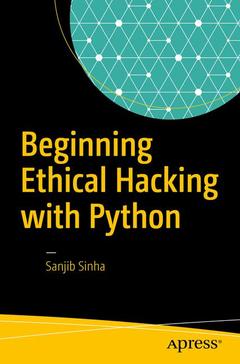Description
Beginning Ethical Hacking with Python, 1st ed.
Language: English
Subjects for Beginning Ethical Hacking with Python:
Keywords
hacking; python; ethicalhacking; python3; beginnerguide; security; encryption
Support: Print on demand
Description
/li>Contents
/li>Biography
/li>Comment
/li>
Learn the basics of ethical hacking and gain insights into the logic, algorithms, and syntax of Python. This book will set you up with a foundation that will help you understand the advanced concepts of hacking in the future. Learn Ethical Hacking with Python 3 touches the core issues of cyber security: in the modern world of interconnected computers and the Internet, security is increasingly becoming one of the most important features of programming.
Ethical hacking is closely related to Python. For this reason this book is organized in three parts. The first part deals with the basics of ethical hacking; the second part deals with Python 3; and the third part deals with more advanced features of ethical hacking.
- Discover the legal constraints of ethical hacking
- Work with virtual machines and virtualization
- Develop skills in Python 3
- See the importance of networking in ethical hacking
- Gain knowledge of the dark web, hidden Wikipedia, proxy chains, virtual private networks, MAC addresses, and more
A rare combination of ethical hacking and Python 3
Covers key concepts of security in Python 3
Includes networking concepts and Linux terminologies




